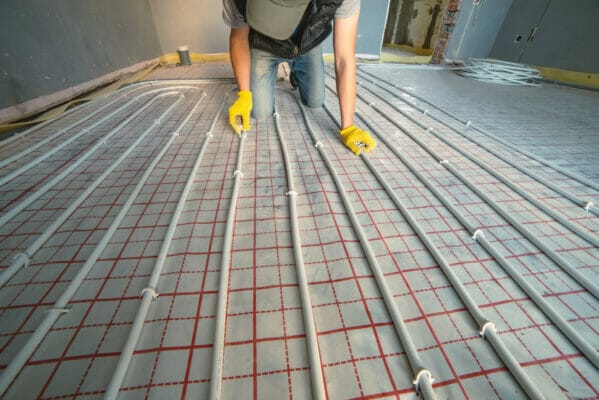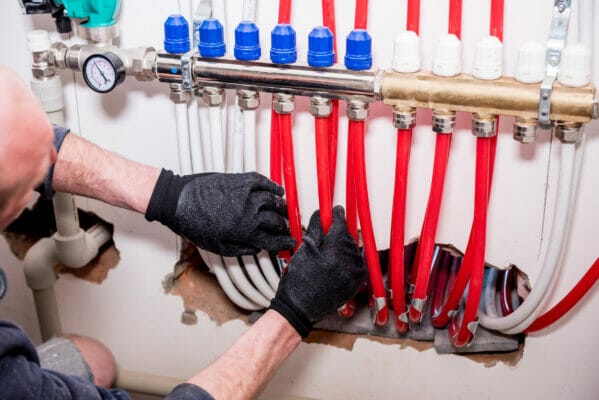Disclaimer: This post may contain affiliate links, meaning we get a small commission if you make a purchase through our links, at no cost to you. For more information, please visit our Disclaimer Page.
A master pipefitter is a skilled tradesman with vast experience and a master’s license. They install, inspect, repair, and maintain piping systems in new construction or existing structures carrying gaseous or liquid materials.

They may do additional jobs, including training and supervising journeyman and apprentice pipefitters.
Table of Contents
What Is the Difference Between a Pipefitter and A Master Pipefitter?
The difference between a pipefitter and a master pipefitter depends on regulations and licensing by the state. There are 2-3 tiers of certification and approvals in most states before becoming a master pipefitter.
Typically, master pipefitters have more experience and often are familiar with business management. In comparison, a pipefitter tends to have less experience and focus mainly on the pipefitting aspects of their work.
Besides, master pipefitters are licensed to work unsupervised. They can become contractors or even business owners.
Furthermore, a regular or apprentice pipefitter often earns about half the wage rates of master pipefitters. Apprentices can increase their earnings as they gain pipefitting skills.
What Does a Master Pipefitter Do?
Master pipefitter is the highest professional level of pipefitting. Master pipefitters often work their way up from apprentice to journeyman to master. Generally, a master pipefitter can work in office buildings, factories, power plants, including nuclear power plants.
Master pipefitters primary responsibilities include installing and maintaining piping systems in commercial and industrial buildings according to regulations and codes for energy and safety efficiency.
They work on pipe installations carrying chemicals, water, gasoline, and other fluid and gaseous substances. Sometimes, the materials held are at high pressure and temperatures.
As a master pipefitter, your duties also include sketching and reading blueprints, installing piping systems, and offering service and repairs for those items. Master pipefitters also design piping systems while considering aspects such as grade, layout, and design function.
Furthermore, the pipefitter decides what equipment and materials are required for the project and prepares cost estimates. Consequently, a master pipefitter has to follow building regulations, codes, and safety rules.
How To Become a Master Pipefitter?
You should follow these steps to become a master pipefitter:
Graduate High School: You need to earn a high school diploma or GED to become a master pipefitter. This is often a prerequisite before enrolling in an apprenticeship program.
Apply For Pipefitting Apprenticeship Program: You’ll gain skills and knowledge through on-the-job training and coursework. So, you should enroll in a pipefitter apprenticeship program to learn the required skills.
The program is often under the supervision of a master or journeyman pipefitter. Note that in some instances, the programs might also have a minimum age requirement or administer a test assessing the apprentice’s general aptitude.
But before you apply for the program, do an evaluation to choose one that provides the best education and training. Also, ensure that the program is government accredited (registered with the US Department of Labor). Government-approved programs meet the high standard requirements in training and coursework.
Gain Relevant Skills: Master pipefitters need skills to contribute to their service, growth, and success. Some of the skills are:
- Problem-Solving: A master pipefitter should have the ability to solve issues and regularly repair piping systems. It’s vital to process problems clearly and identify the ideal solutions quickly.
- Reading Blueprints: Master pipefitters need to read and interpret blueprints correctly to install fixtures and other systems.
- Mathematics: Having a basic knowledge of math helps pipefitters prepare cost estimates and calculate various pipefitting-related costs.
- Technical Knowledge: Working with pipefitting systems can be intricate and includes understanding the functions of different tools, techniques, and components. Hence, a master pipefitter can apply the knowledge they’ve gained throughout the years.
- Coordination: Master pipefitters often work in confined areas while using various equipment and tools. Having excellent coordination skills can enable you to navigate unknown and confined places.
- Communication: A master pipefitter needs to have listening skills to understand the client’s piping needs and offer proper and understandable feedback.
- Managerial Skills: Master pipefitters usually require good administrative skills to supervise and train a team of pipefitters.
Pass The Journeyman Pipefitter Licensure Exam: After completing the apprenticeship program, you should sit for the licensing exam to become a journeyman pipefitter.
Note that journeyman requirements vary from one state to another, so check the specifics required. However, the exam tests the skills and knowledge you learned during the apprenticeship program.
Pass The Master Pipefitting Licensure Exam: After being a journeyman pipefitter for three to four years, you can apply for the master pipefitter license.
First, you need to sit for and pass the master licensing exam, which typically tests your knowledge in pipefitting terminology, basic and advanced installation, repair, and maintenance of piping systems. T
he test also examines laws and rules, fire suppression systems, and International Fuel Gas Code (IFGC), among others.
How Long Does It Take to Be a Master Pipefitter?
Becoming a Master pipefitter might take seven to ten years of education and training. At least two years should be as a journeyman pipefitter while about five years as an apprentice. That means the distinction of master pipefitter is bestowed upon a journeyman with a minimum of five years of experience and sometimes three years of professional references.
Are There Different Types of Master Pipefitter License?
Within the master pipefitter’s certification, there are five types of licenses, including:
- Master Pipefitter- power, heating, cooling piping (PM-01)
- Master Pipefitter- Process Piping (PM-02)
- Master Pipefitter/Pipefitter welder- power, heating, cooling piping (PM-01-W)
- Master Pipefitter/ pipefitter Welder- Process Piping (PM-02-W)
- Master Pipefitter Unrestricted (PM-00)
Are There Other Types of Certifications Necessary for Master Pipefitters?
A master pipefitter is required in significant pipe fitting projects. They usually manage a team of other pipefitters. In addition, they ensure that the work is completed per the ASME, ANSI, OSHA, and NFPA guidelines.
Hence, a master pipefitter should have complete knowledge and be certified in ANSI color codes for piping, OSHA worker safety regulations, and ASME codes for piping pressures.
What’s The Most Money A Master Pipefitter Can Make?
According to ZipRecruiter, some master pipefitters make as high as $105,000 annually. However, most pipefitter salaries range between (25th percentile) $40,000 and (75th percentile) $58,000.
The top earners (90th percentile) make $77,000 annually. The salaries vary greatly based on location, skill level, and years of experience.
Some pipefitters are paid by the hour and get extra pay for working overtime.
According to PayScale.com, the hourly rate for master pipefitters ranges between $29.49 and $33.06. Pipefitters may also receive commission, bonuses, and benefits in addition to their salaries.

What’s The Master Pipefitter’s Work Environment Like?
According to CHRON, approximately 62% of pipefitters work for heating, air conditioning and plumbing contractors, and 13% are self-employed.
Four percent work for heavy and civil engineering contractors, while governments hire another four percent.
Travel might be necessary since a master pipefitter’s work can take you to office buildings and factories in different areas.
The pipefitter should also be comfortable with climbing ladders, lifting heavy items, and sometimes working in confined spaces.
Moreover, safety can be a concern for the master pipefitter career path due to the risk of burns, cuts, and falls. Sometimes outside work is required, even in harsh weather. In addition, emergency calls might make weekend and night work necessary.
